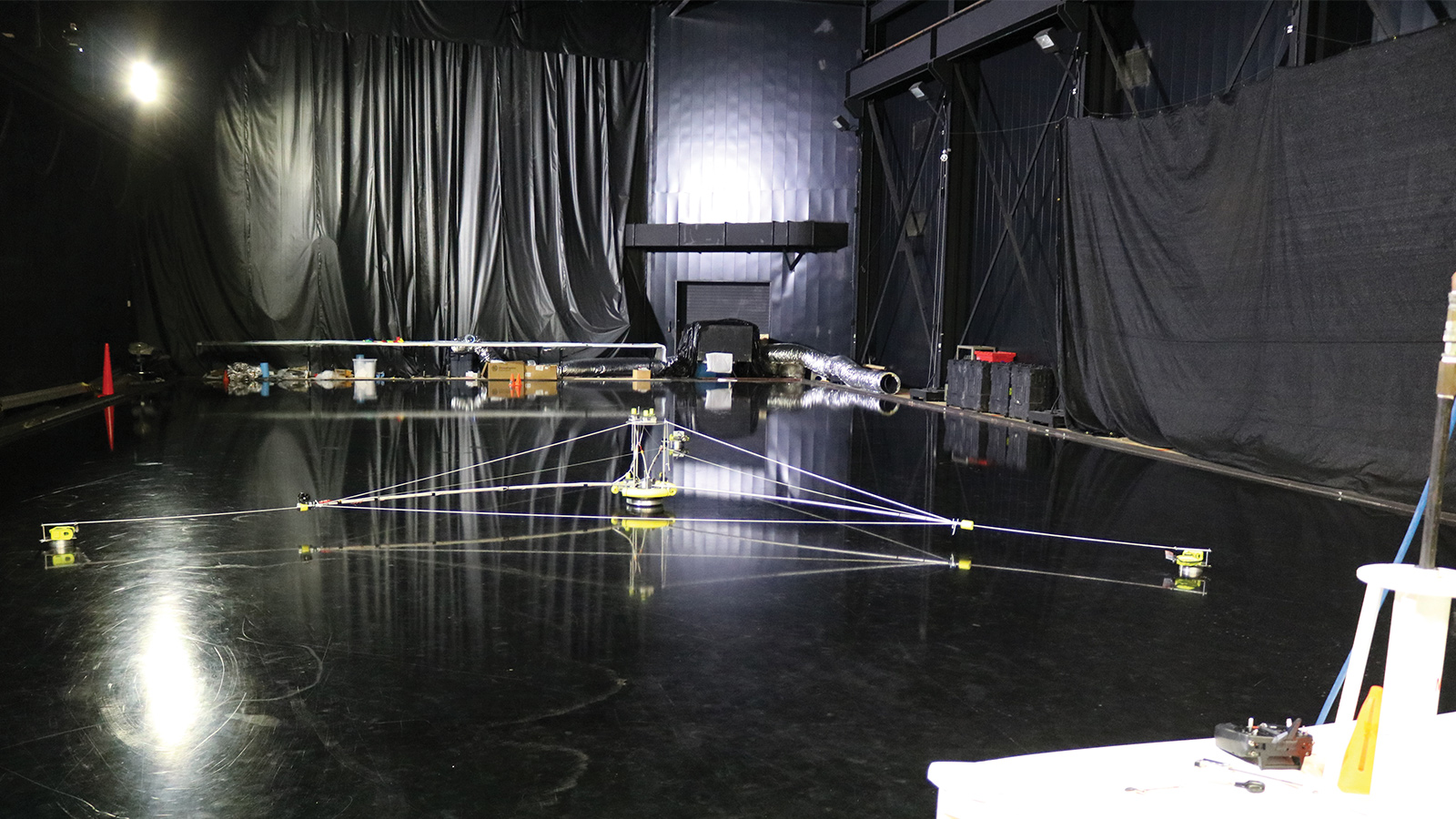Stay Up to Date
Submit your email address to receive the latest industry and Aerospace America news.
The Space Tethers Technical Committee focuses on the development and use of tether-based technology for space systems.
A team lead by researchers from Shizuoka University in Japan in September launched an experiment to the International Space Station to demonstrate a critical space elevator capability. The experiment consists of two cubesats connected by a 10-meter cable along which a smaller “elevator car” moves using its own motor. Cameras record the movement.
Through NASA’s Educational Launch of Nanosatellites program, the Miniature Tether Electrodynamics Experiment, or MiTEE, led by the University of Michigan was expected to be delivered to NASA in late 2018 for a launch late next year on the second flight of Virgin Orbit’s LauncherOne rocket. MiTEE-1 uses a deployable, rigid, 1-meter boom to measure the electrodynamics of current collection to pico-/femto-scale satellites (satellite mass up to 200 grams) in the Earth’s ionosphere. With respect to the cubesat electrical common, MiTEE-1 will apply a bias of about 200 volts to an end-body collector at the boom’s end. The cubesat also will emit an electron beam to close the electrical circuit through the ionosphere, which will be characterized by a miniaturized Langmuir probe instrument.
Investigations at NASA’s Marshall Space Flight Center in Alabama on electrostatic-sail, or e-sail, propulsion continued. In April, the Marshall team finalized its benchmark plasma chamber tests, which determined the amount of deep space thrust force created per meter of tether with a positive biased charge, how the force diminishes as the spacecraft travels away from the sun, and how the effective area of an e-sail changes with distance from the sun. It was determined that, at a distance of 1 astronomical unit from the sun, the thrust force generated per meter of tether with a 6-kilovolt positive bias is almost 1 millinewton per meter, dropping off linearly as the inverse of the distance to the 1.07 power (as opposed to the square of the distance as solar sails do). This concept will enable small scientific spacecraft to be placed out of the solar plane at a rate of 12 to 18 degrees per year or enable a mission to the edge of our solar system (the heliopause region) within eight to 10 years — the same distance Voyager 1 went in 34 years.
The Spanish Ministry of Economy, Industry and Competitiveness funded an 18-month project, which started in late 2017, at Universidad Carlos III de Madrid to explore the feasibility of the low-work-function tether concept. In such a system, specialized coatings enable natural thermionic and photoelectric emission of electrons along a segment of tether, which can enable propellantless propulsion as it avoids the need of gas-fed hollow cathodes. Work this year involved vacuum-chamber testing of conductive tapes coated with low-work function materials.
In February, the Phobos L1 Operational Tether Experiment, or PHLOTE, study team, led by NASA’s Langley Research Center in Virginia and Star Technology and Research Inc., developed a method of tether length control to manage the periodic motion of the Lagrange point due to the slight eccentricity of Phobos’ orbit around Mars. A PHLOTE architecture with this adjustable tether system can be used in synchronous rotation at asteroids to allow direct sampling of multiple equatorial sites without the need for propulsive landings. This method could also gently pull selected boulders off asteroids.
In March, the Bi-sat Observations of the Lunar Atmosphere above Swirls mission concept team, led by researchers at NASA’s Goddard Space Flight Center in Maryland, wrapped up the development of its “sky crane” concept, which uses a tether to connect two small satellites so that the system can fly in a stable, frozen lunar orbit and get the lower satellite to fly within a few kilometers of the lunar surface. The team performed detailed simulations in the lunar potential field, confirming that the system’s behavior will be stable and compatible with the mission requirements.
Photo: An e-sail spacecraft concept consisting of a rotating central hub spacecraft with three deployable multikilometer-length tethers. Credit: NASA
Stay Up to Date
Submit your email address to receive the latest industry and Aerospace America news.




